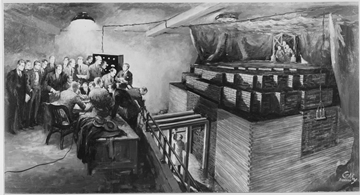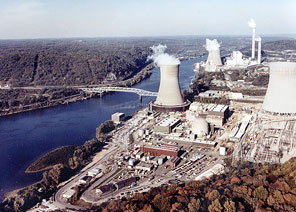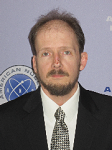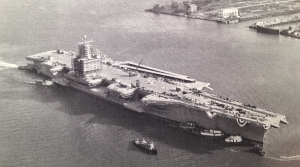A Weekend of Nuclear History
The weekend of December 1-2, 2012, sees three events of note relative to the history of nuclear energy.
Saturday, December 1, saw the Inactivation Ceremony for USS Enterprise, CVN-65, which was the first nuclear-powered aircraft carrier ever built and by far the oldest nuclear-powered ship in service. (USS Nautilus, a nuclear-powered attack submarine, and the Russian nuclear-powered icebreaker Lenin preceded Enterprise into service, as did the cruiser USS Long Beach.) The USS Enterprise was launched on September 24, 1960 (view of launching seen above, at Newport News Shipbuilding and Drydock), and commissioned into service November 25, 1961. The ship was deactivated just past her 51st birthday. Much more information about the ship, which will be defueled and eventually dismantled, can be found at the official USS Enterprise website.
During the ceremony, the Secretary of the Navy revealed that the name Enterprise will live on in Navy history; the third Gerald R. Ford class nuclear-powered carrier will be CVN-80, USS Enterprise. Instead of eight A2W reactors as installed in CVN-65, CVN-80 will have two A1B reactors with a total power higher than that of the two A4W reactors installed in the Nimitz (CVN-68) class nuclear-powered carriers that followed the first nuclear USS Enterprise.

Sunday, December 2, marks the 70th anniversary of the first criticality of the first nuclear reactor ever built: Enrico Fermi's "Atomic Pile," known as CP-1 or "Chicago Pile 1," achieved criticality at 3:53 PM, December 2, 1942. The pile, according to "The Atomic Energy Deskbook," Hogerton, 1963, contained 385 tons of graphite to act as the moderator. Hogerton relates the fact that when the pile was constructed, "only 6 tons of uranium metal were available and it was necessary to complete the assembly with 34 tons of uranium oxide." The pile was built in layers of blocks of graphite and fuel, eventually 57 layers deep. According to Hogerton, "Critical conditions were achieved somewhat sooner than anticipated, so that the reactor assembly, which had been expected to be spherical, took the shape of an obloid spheroid somewhat flattened at the top."
Argonne National Laboratory, under whose auspices the original CP-1 was built, has excellent resources on this famous anniversary. The Argonne page on the 70th anniversary gives background and perspective, while "The Dawn of the Nuclear Age" includes a video featuring two early nuclear pioneers, Dr. Harold Agnew and Dr. Len Koch. Agnew was one of the 49 persons present when the CP-1 achieved criticality in 1942.

December also marks a third anniversary: the Shippingport Atomic Power Station achieved its first criticality, and also later achieved full rated power, in December 1957. Shippingport was the first commercial nuclear generating station ordered in the United States, and it was the nation's first large-scale nuclear power plant to generate electricity for civilian purposes.
___________________________
 Will Davis is a former US Navy Reactor Operator, qualified on S8G and S5W reactor plants. Davis performs Social Media services for ANS under contract, writes for ANS Nuclear Cafe as well as for Fuel Cycle Week, and also writes his own Atomic Power Review blog.
Will Davis is a former US Navy Reactor Operator, qualified on S8G and S5W reactor plants. Davis performs Social Media services for ANS under contract, writes for ANS Nuclear Cafe as well as for Fuel Cycle Week, and also writes his own Atomic Power Review blog.

-3 2x1.jpg)





